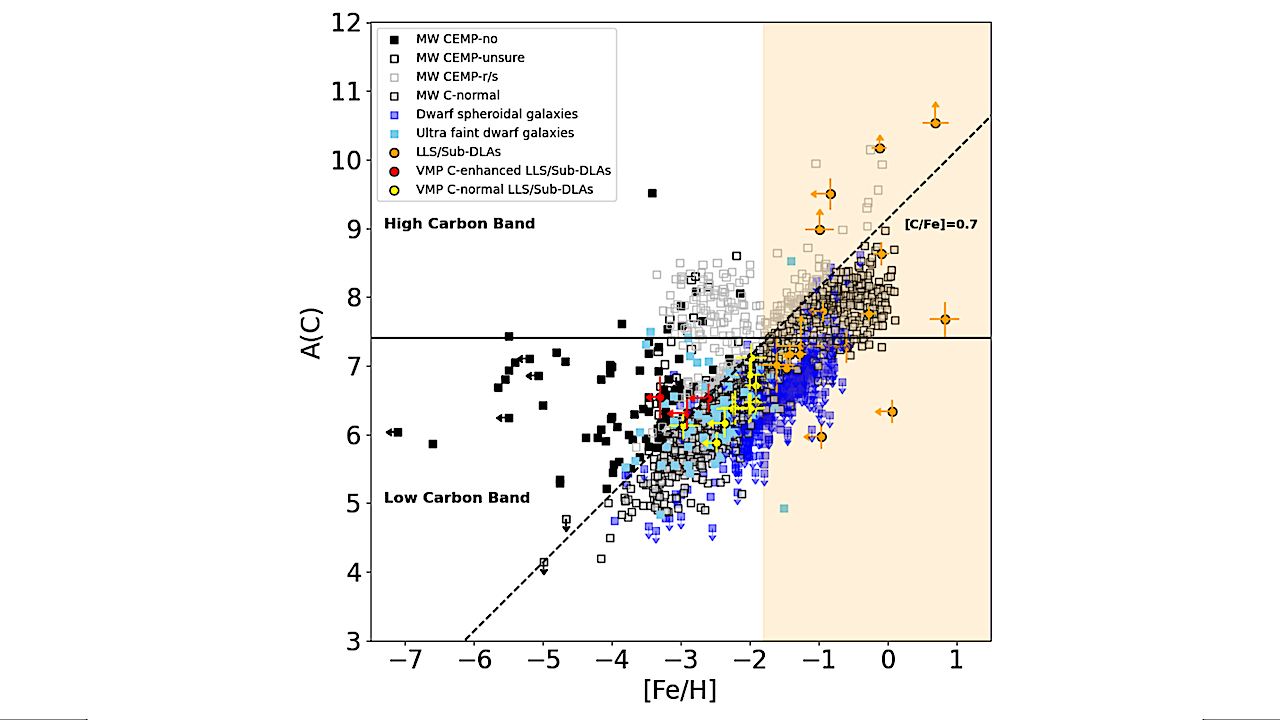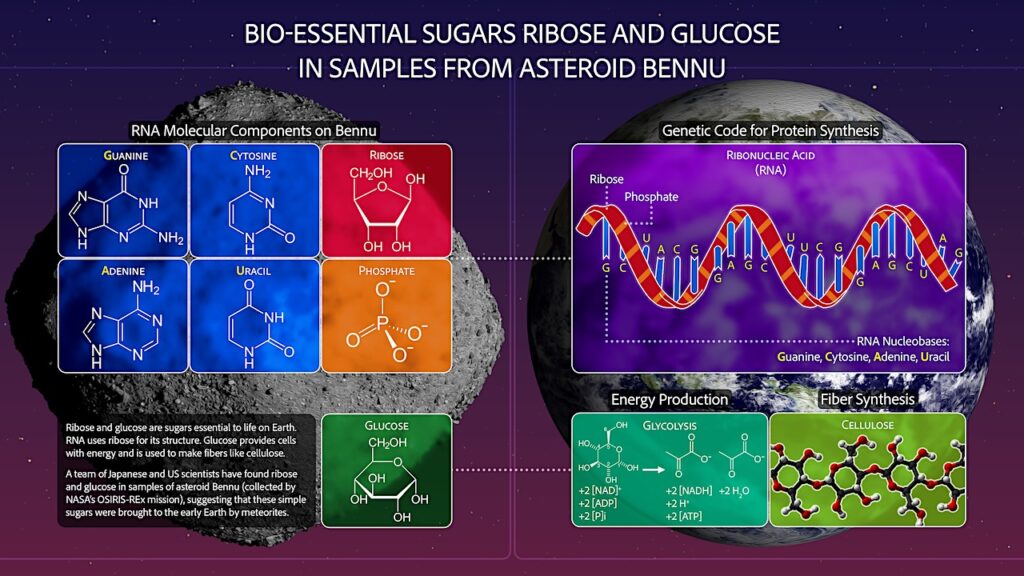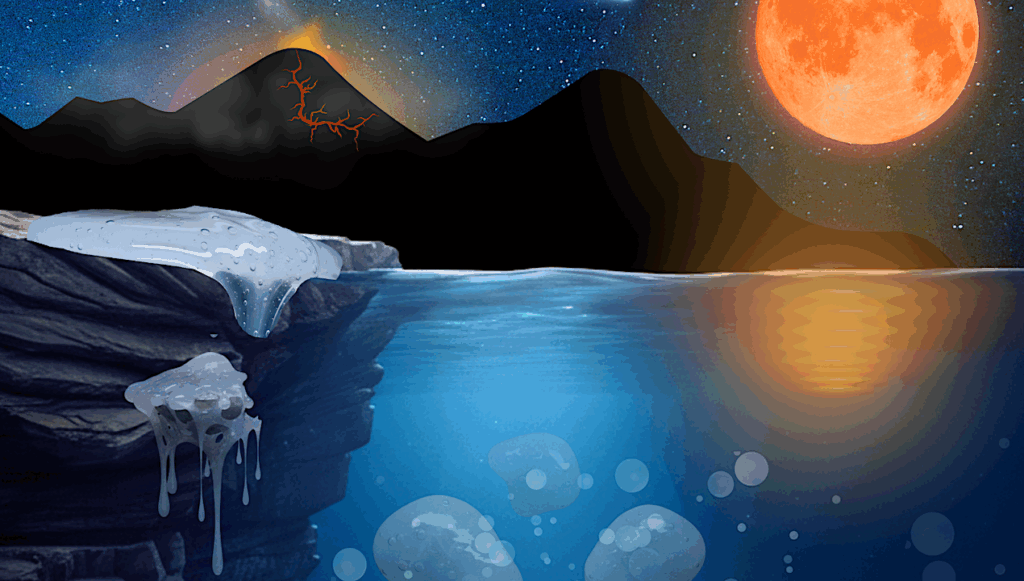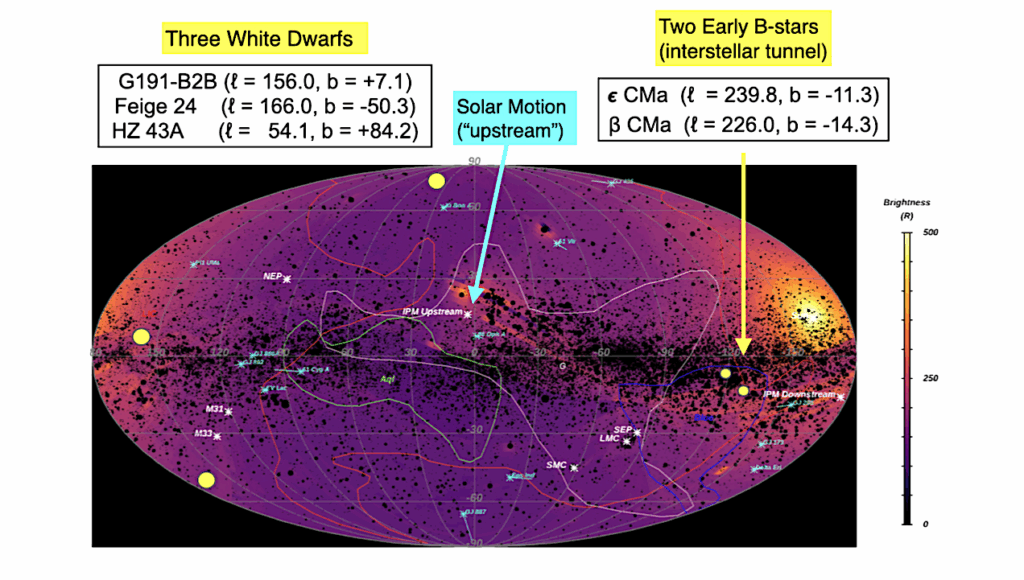Astrochemistry: Gas Clouds With The Leftovers Of The First Stars

Using ESO’s Very Large Telescope (VLT), researchers have found for the first time the fingerprints left by the explosion of the first stars in the Universe. They detected three distant gas clouds whose chemical composition matches what we expect from the first stellar explosions. These findings bring us one step closer to understanding the nature of the first stars that formed after the Big Bang.
“For the first time ever, we were able to identify the chemical traces of the explosions of the first stars in very distant gas clouds,” says Andrea Saccardi, a PhD student at the Observatoire de Paris – PSL, who led this study during his master’s thesis at the University of Florence.
Researchers think that the first stars that formed in the Universe were very different from the ones we see today. When they appeared 13.5 billion years ago, they contained just hydrogen and helium, the simplest chemical elements in nature [1]. These stars, thought to be tens or hundreds of times more massive than our Sun, quickly died in powerful explosions known as supernovae, enriching the surrounding gas with heavier elements for the first time. Later generations of stars were born out of that enriched gas, and in turn ejected heavier elements as they too died. But the very first stars are now long gone, so how can researchers learn more about them? “Primordial stars can be studied indirectly by detecting the chemical elements they dispersed in their environment after their death,” says Stefania Salvadori, Associate Professor at the University of Florence and co-author of the study published today in the Astrophysical Journal.
Using data taken with ESO’s VLT in Chile, the team found three very distant gas clouds, seen when the Universe was just 10–15% of its current age, and with a chemical fingerprint matching what we expect from the explosions of the first stars. Depending on the mass of these early stars and the energy of their explosions, these first supernovae released different chemical elements such as carbon, oxygen and magnesium, which are present in the outer layers of stars. But some of these explosions were not energetic enough to expel heavier elements like iron, which is found only in the cores of stars. To search for the telltale sign of these very first stars that exploded as low energy supernovae, the team therefore looked for distant gas clouds poor in iron but rich in the other elements. And they found just that: three faraway clouds in the early Universe with very little iron but plenty of carbon and other elements — the fingerprint of the explosions of the very first stars.
This peculiar chemical composition has also been observed in many old stars in our own galaxy, which researchers consider to be second-generation stars that formed directly from the ‘ashes’ of the first ones. This new study has found such ashes in the early Universe, thus adding a missing piece to this puzzle. “Our discovery opens new avenues to indirectly study the nature of the first stars, fully complementing studies of stars in our galaxy,” explains Salvadori.
To detect and study these distant gas clouds, the team used light beacons known as quasars — very bright sources powered by supermassive black holes at the centres of faraway galaxies. As the light from a quasar travels through the Universe, it passes through gas clouds where different chemical elements leave an imprint on the light.
To find these chemical imprints, the team analysed data on several quasars observed with the X-shooter instrument on ESO’s VLT. X-shooter splits light into an extremely wide range of wavelengths, or colours, which makes it a unique instrument with which to identify many different chemical elements in these distant clouds.
This study opens new windows for next generation telescopes and instruments, like ESO’s upcoming Extremely Large Telescope (ELT) and its high-resolution ArmazoNes high Dispersion Echelle Spectrograph (ANDES). “With ANDES at the ELT we will be able to study many of these rare gas clouds in greater detail, and we will be able to finally uncover the mysterious nature of the first stars,” concludes Valentina D’Odorico, a researcher at the National Institute of Astrophysics in Italy and co-author of the study.
Notes
[1] Minutes after the Big Bang the only elements present in the Universe were the three lightest ones: hydrogen, helium and very small traces of lithium. Heavier elements were formed much later on in stars.
Evidence of first stars-enriched gas in high-redshift absorbers, open access
Astrobiology, Astrochemistry








